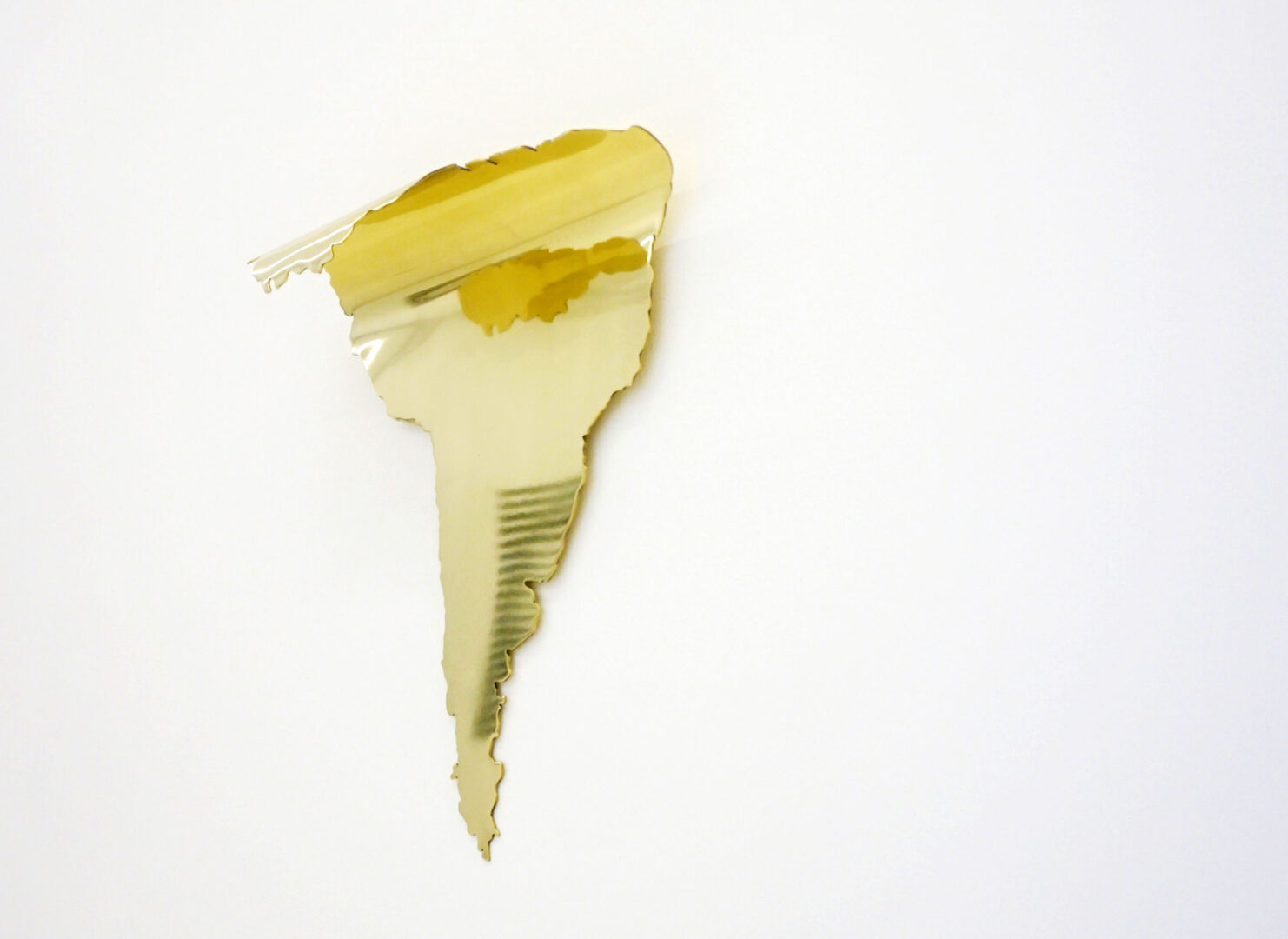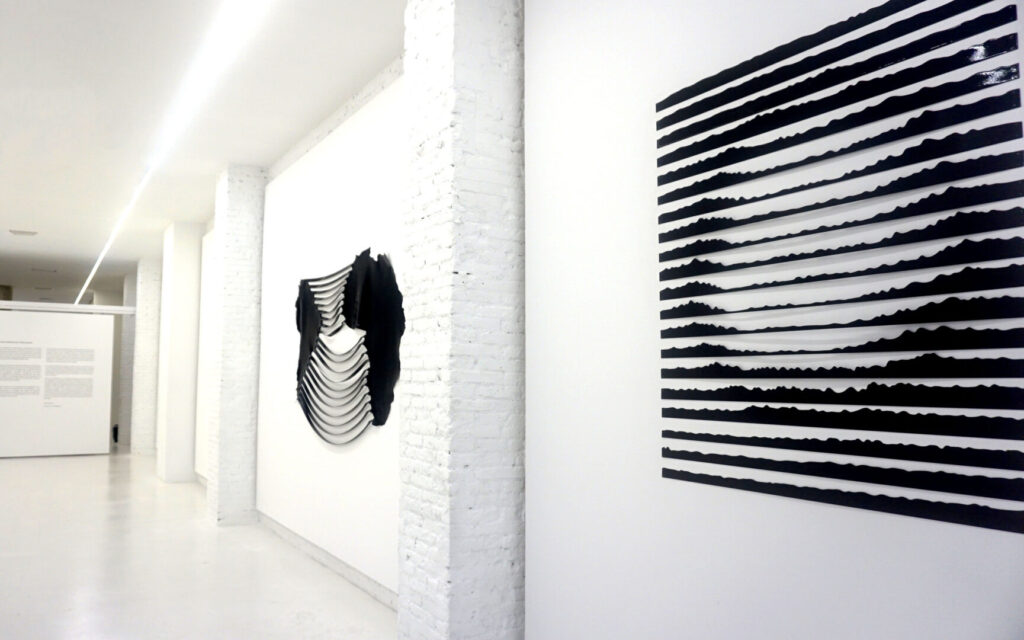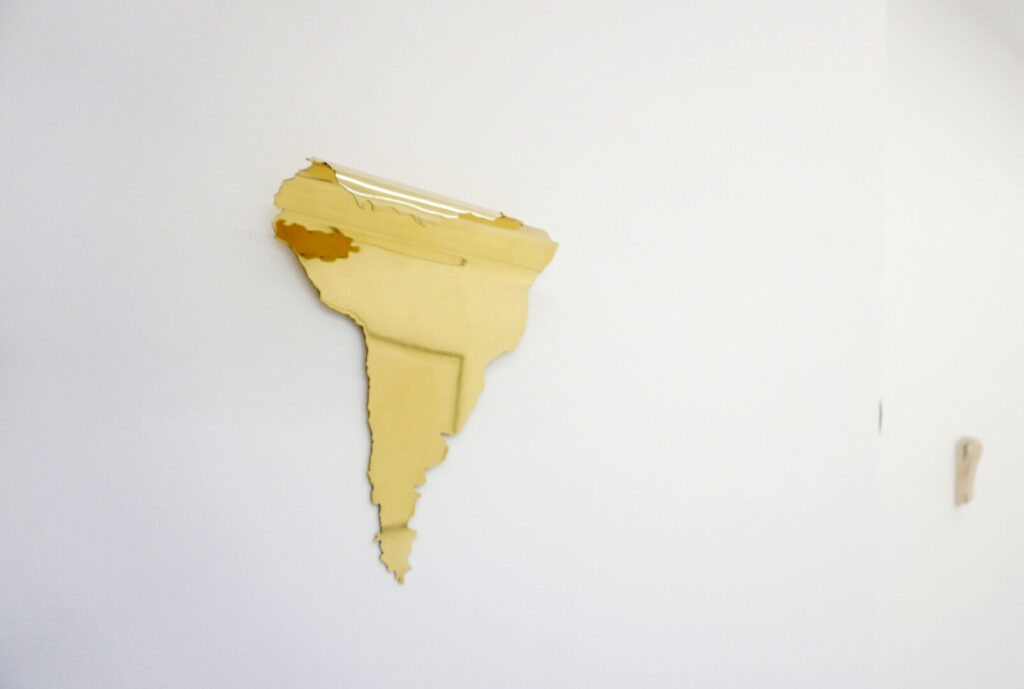
The forces of production unleash historical events to which human beings are forced to react. The media foster confusion when it comes to clarifying an event, and history books offer us an interpretation of the facts that can be questioned through an exercise in abstraction, as do the artists Marina Camargo and María García Ibañez through the list of works presented in ABSOLUTE EXTREMES.
Aware of the economic interests that deformed the South American continent, Marina Camargo reverses the mechanisms that articulate an image to question the systems behind its construction. Concerning the signs handled by culture and the constitution of America – a concept born of colonization -relations of domination go far beyond politics and economics when these disappear. Peruvian sociologist Aníbal Quijano speaks of other forms of control through the cultural relationship with the West:
It consists, in the first term, of the colonization of the imaginary of the dominated. That is to say, it acts in the interiority of that imaginary. (…) From now on, the survivors will have no other modes of formalized and objectified plastic intellectual expression, but through the cultural patterns of the dominant ones, even if subverting them in certain cases, to transmit other conditions of expression.
Within the framework of the reflection made by Quijano, Marina Camargo pours her subjectivity into a series of maps that relate space, time and memory; maps that are drawn from a critical view of colonial extractivism and that at the same time remind us of the fragility of a nature at the service of human beings, seeking their maximum yield and productivity, but also causing a radical transformation of terrestrial ecosystems, today very deteriorated given the speed with which they have undergone these changes.


In the work of María García Ibañez, the slow process becomes an end in itself that reveals the futility of apparent reality. Her work relies on systems of cells, understood as the minimum unit of representation that allows the artist to articulate other relationships between materiality and representation. Between the message and the structure that forms and sustains it.
María García Ibañez creates a laboratory for analyzing nature to subvert its apparent chaos in her studio. Humans’ aptitudes and competencies to analyze and study their environment differentiate man from the rest of animals. Scientific analysis allows us to transmit information about what is not seen but exists, and science and art share their speculative capacity. To magnify a useless event, to isolate a sudden movement, to select a gesture and magnify it until we lose ourselves in the sound that enunciates it, the grain that photographs it, or the verb that names it, allows us to reinterpret the events that are given to us, to understand history by taking new points of reference.
EXTREMOS ABSOLUTOS
Exhibition by Marina Camargo and María García Albañez
Galería Punto (Valencia, Spain)
From 25/07 until 10/09/2021
Text by Violeta Janeiro
Photographs by Jorge López